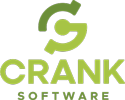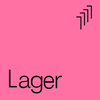Home > On-Demand Archives > Talks >
Ensuring Data Integrity Using Blockchain With Toradex Torizon
Mohammed Billoo - Watch Now - EOC 2021 - Duration: 41:07

Very interesting topic. Really enjoyed the demo, as it made it easier to grasp the whole concept of the blockchain and what is involved in adding blocks.
Absolutely! Blockchain is such a massive topic that it is important to get to the crux of its goal, which lets us understand how it can be applied to IoT (if it even can).
Great insight and a topic well worth considering.
Thanks! Glad you enjoyed the talk.
Cool demonstration, Mohammed! The immutability of blockchain could be so valuable for data that is analyzed or has action taken upon it by automated services. Still trying to wrap my head around the practicality for highly constrained systems.
Glad you enjoyed the demo and the talk! Yes, I agree. Blockchain definitely has a use case in IoT, but it's important to consider the implications of using it in a resource constrained system.


























I'm a bit late but I'll still try an comment :-)
If I got it right, the simple demo shows the downside of the complexity in calculating hashes: it consumes time and energy.
I still have lots of question marks in my head. I didn't get what block chain elements the sender sends to the receiver. Does the sender always send the previous block and the current block? Why did it send the base block with the data block?
The sender would not send the whole chain when a new block is created would it? So the sender needs to get the previous block from somewhere and hope he is the first to add new data?
I do see a bit of a benefit in sharing data in a distributed system with other devices using a blockchain. But for a big net I think there is a big overhead for resolving collisions.
If I think of IoT as a closed system like a factory senor network of some kind. Wouldn't it make more sense to have a central server or some central servers who generate the hashes and builds the blockchain?
The blockchain itself would guarantee the data integrity and creating the chain would be a lot easier. The benefit in slide 19 is still there. Data can be stored everywhere and edge nodes are aware of the data collected by other nodes.
I am missing something... I really don't see how a decentralized blockchain can be used on a big net of IoT devices. The technology is neat, but I really have trouble seeing a use case.
Thanks for the talk and giving me something to think on :-)